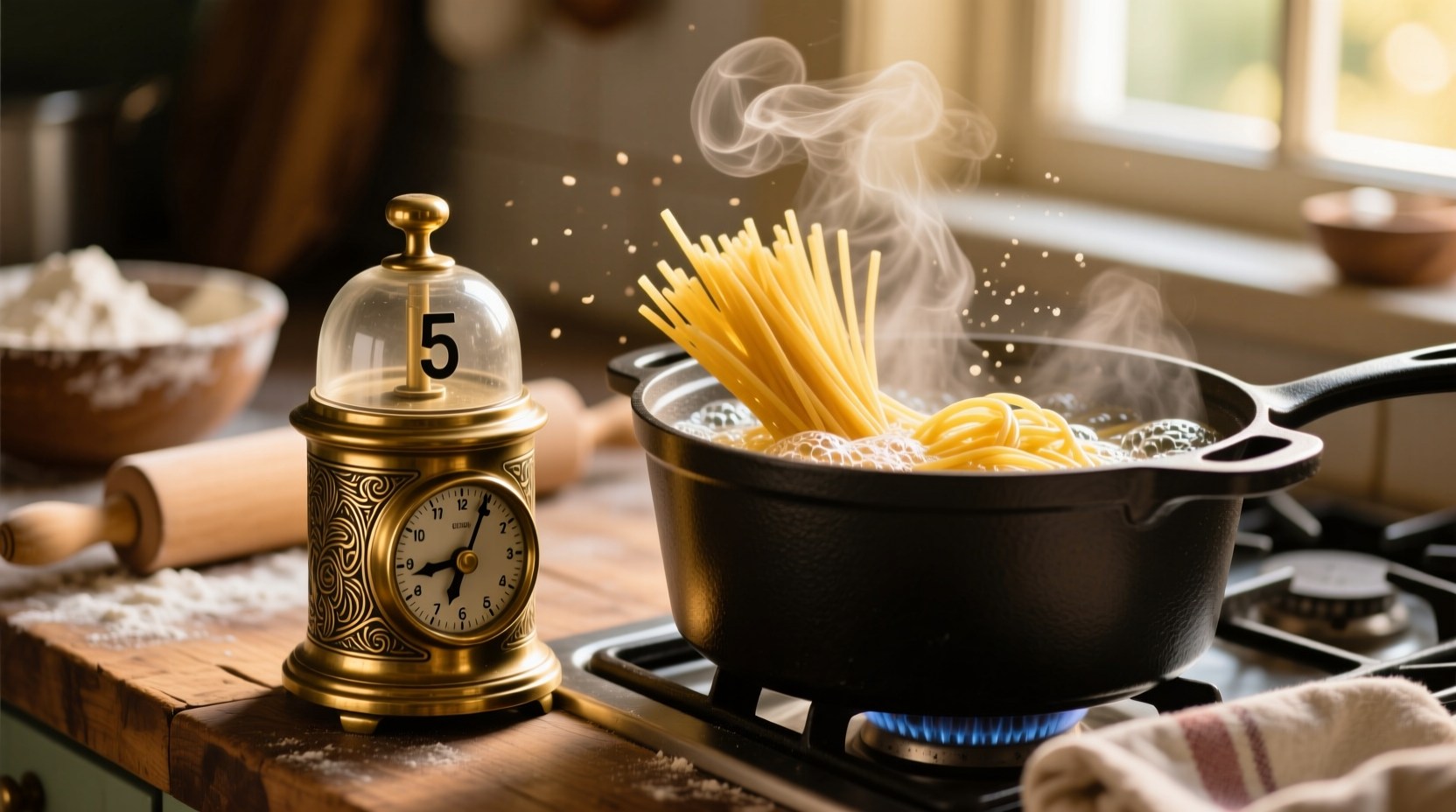The Science Behind Perfect Pasta Timing
Getting pasta cooking time right transforms a simple meal into a culinary delight. Many home cooks rely solely on package instructions, but understanding the variables gives you precise control over texture and flavor absorption. Let's break down what really matters when timing your pasta.
What Determines Pasta Cooking Duration?
Three primary factors influence how long pasta needs in boiling water:
| Pasta Type | Standard Cooking Time | Al Dente Target | Water Ratio |
|---|---|---|---|
| Spaghetti, Linguine | 8-10 minutes | 7-8 minutes | 4-6 quarts per pound |
| Penne, Rigatoni | 10-12 minutes | 9-10 minutes | 5-6 quarts per pound |
| Fettuccine, Pappardelle | 2-3 minutes | 1.5-2 minutes | 4 quarts per pound |
| Stuffed Pasta (Ravioli) | 3-5 minutes | 2.5-4 minutes | 5 quarts per pound |
| Whole Wheat Varieties | 12-15 minutes | 10-13 minutes | 5-6 quarts per pound |
According to the Culinary Institute of America's pasta preparation guidelines, water volume directly impacts cooking consistency—insufficient water causes uneven cooking and starch buildup. Their research shows a minimum 4:1 water-to-pasta ratio prevents sticking while maintaining consistent temperature during cooking.
Step-by-Step Timing Guide
Preparation Phase: Setting Up for Success
Before your timer starts, proper setup prevents timing errors. Use a large pot (at least 4-6 quarts capacity for 1 pound of pasta) filled with cold water. Add 1-2 tablespoons of salt after the water reaches a rolling boil—adding salt to cold water can damage stainless steel pots over time. The salt concentration should match seawater (about 1.5%) for optimal flavor penetration without making pasta taste salty.
Cooking Phase: The Critical Minutes
When pasta hits boiling water, the clock starts. For dried pasta:
- Begin testing 2 minutes before package instructions suggest
- Fish out a piece with tongs, cool slightly, then bite
- Perfect al dente offers slight resistance in the center
- Remove from heat 1 minute before fully cooked—pasta continues cooking off-heat
Fresh pasta requires more attention. As noted in Bon Appétit's fresh pasta guide, the delicate dough cooks rapidly—often in under 3 minutes. Their food lab testing shows fresh pasta absorbs water 300% faster than dried varieties due to its higher moisture content.

Finishing Phase: Carryover Cooking Matters
Many cooks overlook carryover cooking—the process where residual heat continues cooking pasta after draining. The University of California's Home Food Preservation Guide documents that pasta temperature remains above 180°F for 3-4 minutes after draining, equivalent to 30-60 seconds of additional cooking time.
Professional chefs use this technique: reserve 1 cup of starchy cooking water before draining, then finish pasta in the sauce for 60-90 seconds. This method, validated by Serious Eats' food science testing, allows starches to bind with sauce components while controlling final texture.
Common Timing Mistakes and Solutions
Even experienced cooks make these timing errors:
Overreliance on Package Instructions
Manufacturers design cooking times for ideal conditions, but altitude, water hardness, and stove output vary. At elevations above 3,000 feet, increase cooking time by 25% as documented by the USDA's High Altitude Cooking Guidelines.
Insufficient Water Volume
Using too little water causes temperature drops when adding pasta, extending cooking time unpredictably. The American Chemical Society's Pasta Chemistry Study confirms that maintaining a rolling boil requires at least 4 quarts of water per pound of pasta to prevent starch gelatinization issues.
Ignoring Pasta Shape Variables
Thicker shapes like rigatoni need 2-3 minutes longer than thin spaghetti of the same length. Specialty shapes with ridges (like fusilli) or holes (like penne) trap more water, requiring additional cooking time to reach uniform tenderness.
Advanced Timing Techniques
For restaurant-quality results, implement these professional methods:
The Ice Water Test
When nearing target time, remove a piece and plunge into ice water. This stops cooking instantly, letting you accurately assess doneness without carryover effects. Chefs at Rome's La Gensola restaurant use this technique for their famous carbonara.
Visual Texture Indicators
Watch for these visual cues:
- Dried pasta changes from opaque to slightly translucent
- Surface develops a subtle sheen
- Center maintains a tiny white dot when halved (al dente)
Temperature Monitoring
Food science research shows pasta reaches ideal texture at 80-85°C (176-185°F) internally. Using an instant-read thermometer eliminates guesswork—particularly valuable for stuffed pastas where undercooking risks food safety.
When Timing Goes Wrong: Recovery Strategies
Rescue overcooked pasta by:
- Immediately shocking in ice water to stop cooking
- Tossing with olive oil to prevent further moisture absorption
- Using in baked dishes where texture matters less
For undercooked pasta:
- Return to boiling water for 30-second intervals
- Finish in simmering sauce with reserved pasta water
- Cover and steam for 2 minutes off-heat











 浙公网安备
33010002000092号
浙公网安备
33010002000092号 浙B2-20120091-4
浙B2-20120091-4